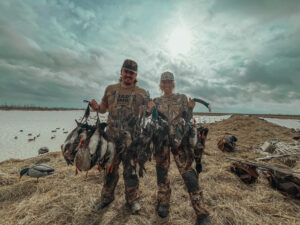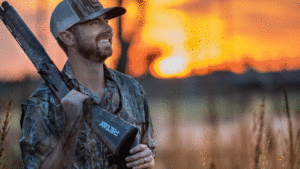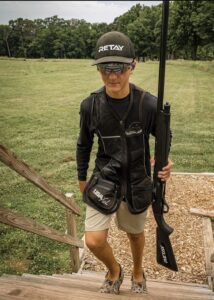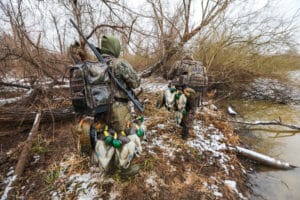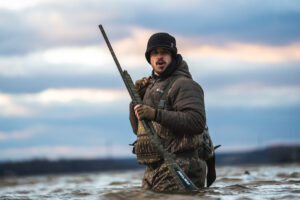
By: Justin Hunold
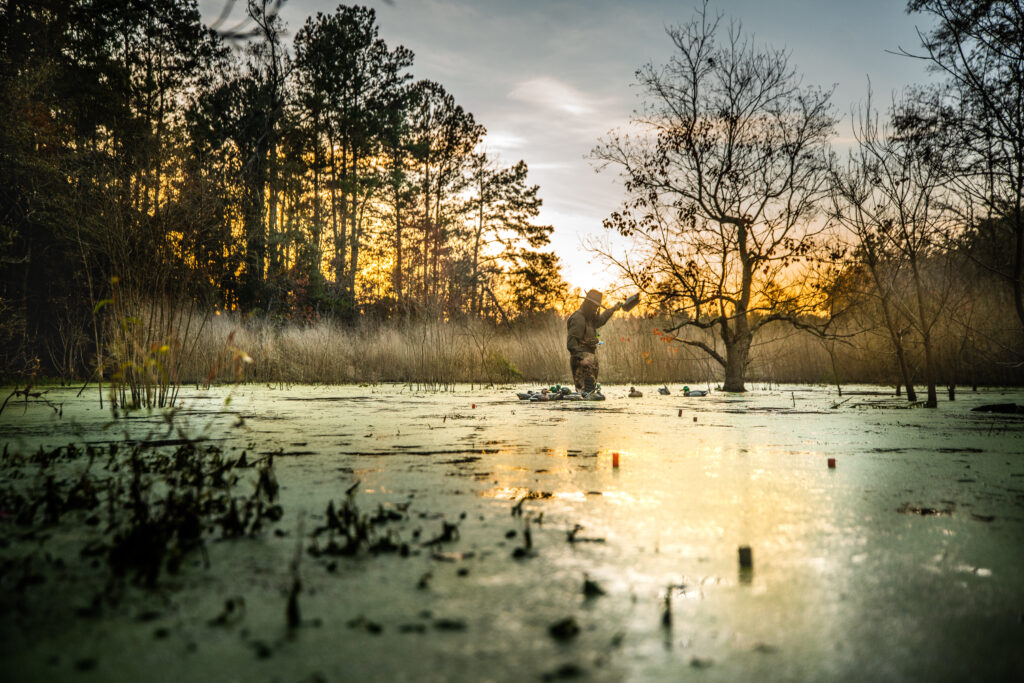
Let’s start by saying there is no one size fits all situations in waterfowl hunting. A lot of “Gospel Truths” to some folks maybe hocus pocus to others.
“I only need half a dozen Mallard Decoys and a Jerk rig.” – Not on the coasts of North and South Carolina.
“ Canada’s are dumb over water.”- Not if you shot em up where they roost over the same water.
“ You gotta have spinners out to add visibility.” – Not if you’re way down South and those birds have been shot at over Spinners for a few thousand miles.
I’m going to stick my neck out here and give you a truth that I and a few of my friends cling to, if a hunter shows up with a 12 gauge loaded with 3” #2’s in anywhere from 1 ⅛ to 1 ½ Oz of steel shot they can handle just about any waterfowl situation they might get thrown into. We are focusing on steel shot and not other non toxics like Bismuth or Tungsten. This will be a matter of KISS or Keep it Simple Stupid. Because let’s face it we all get out smarted by birds so the stupid part applies and keeping it simple makes you a more efficient killer.
When Not To Use #2
Let’s look at some reasons you might not want to be shooting #2. If there is one argument against #2 in all situations, everything is a nail if all you have is a hammer argument…kinda. Shot size and choke constriction work together and can be very situational. So, it stands to reason that although a #2 might be great at a lot, it’s not optimum for some applications.
Early Season Teal, Gadwal and Woodies might be very common in your area. In fact a lot of places have a “Teal Season”. This is a place where a #2 can work but shouldn’t be the first choice. These ducks are small, fast and maneuverable. Most hunters will opt for a #3 or #4 in Steel for this sort of hunt. Likely this will get paired up with a bit more open a choke as well.
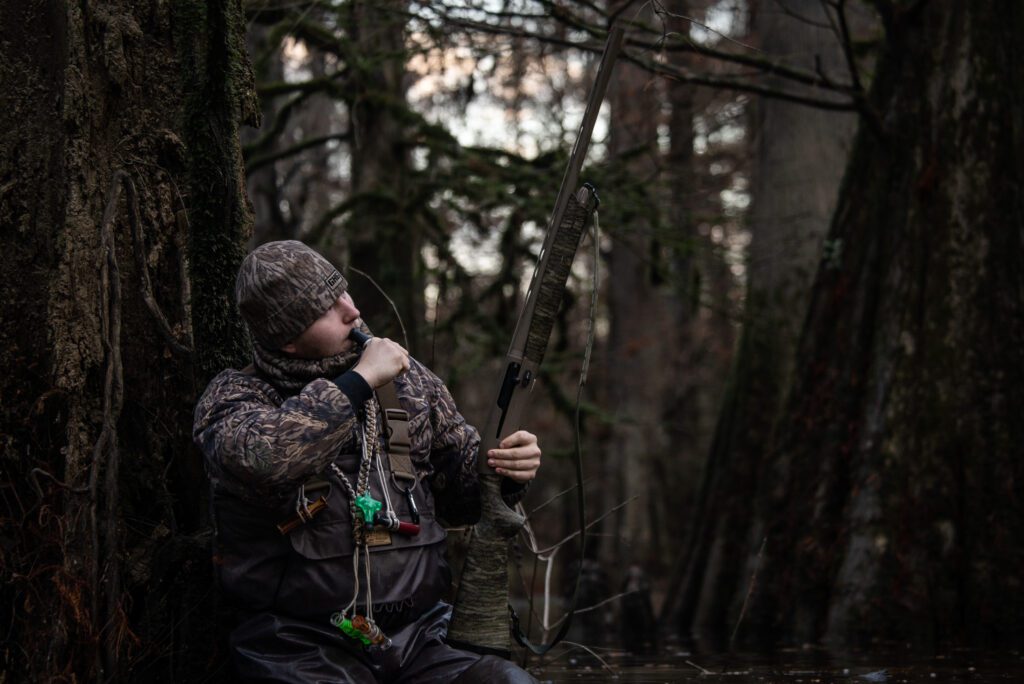
Most of the time when taking on the little ducks we will be expecting them in close with shots over decoys. With this in mind small ducks in close calls for smaller shot with good pattern density. The little guys aren’t as hearty as say a diver and a hunter will be better suited with less holes in their pattern. This isn’t to say a #2 won’t work, it just isn’t the best option.
The other extreme is late season geese. I’ve hunted Canada’s coming off the Finger Lakes that had what seemed like inches of fat on them. When it came to those birds we were starting our shot size choices at BB and going up from there. These are big tough birds that have plenty of cushion for the pushin so to speak. This is a time you’d find a lot of us running full charge 3.5” shells stuffed full of BB or BBB. We killed a lot of birds with those loads, but looking back a 3” #2 probably would have done fine at the distances and circumstances we were putting birds down at.
When to use #2
Firstly, if I was limited to one steel shot size for all waterfowl hunting situations it would be a #2. This shot size is about as big as you can go without hampering ballistic performance, it holds reasonable pattern density, and carries enough kinetic energy for most waterfowl work. So, it’s a great choice for a lot of hunters who might be in crossover seasons with ducks and geese, or situations like I was in last Saturday where I was as likely to get a shot at a Blue Bill or Bufflehead as I was a Mallard or Black Duck.
Big Puddle Ducks are what most waterfowlers chase. Mallards, Blacks, Widgeons, Shovelers, and Pintails will all be reliably taken with a 3” #2. I know a lot of folks like a #3 for this sorta work but let’s face it the ducks don’t know the difference and #2 are easily found at Walmart if need be. Normally, when I head out to some backwater and I am expecting to encounter the likes of any of these birds my Retay will be stoked with 3” 1 ⅛ #2 of some brand or another. I’m confident that I am not leaving anything to chance with that shell selection.
Divers, you might love em, you might hate em but man are they fun. So, here’s a confession, TJ Rademacher and I have been hunting partners for a long time. And have been Long Line hunting partners. We chased Divers when every other person in the piedmont of NC was out looking for Green Heads. We would be out setting twelve dozen decoys, that’s 144 for you mathematicians out there. After all that work we would wait for some ducks with little wings and big feet to come circling in and try to land in our lines. We generally did that with 3” #2’s ready and willing.
We killed a few Diving Ducks back then, and I have no reason to shoot anything other than #2’s at them. They are tough and we were the school of shooting until they stopped moving. Shot size matters in the world of tough ducks built to disappear so, this is where the majority of my thought on the best shot size for duck hunting came from. I never met a puddle duck that was half as tough as a buff even if they were normally twice the size. Number 2’s were my go to.
In most of the places I inhabit there is a September Goose Season for Resident Canadas. When those 30 days roll around you can bet your bottom dollar that my gun has #2’s in it. In one of my previous articles I talked about a hunt where TJ and I crushed some local Canada’s on an island. We were shooting #2’s. In that same article I talk about my stupid head flairing geese , well we killed our 4 man limit that day and we were shooting #2’s. In all my Goose hunting experience I believe that a majority of birds were taken with a #2 and I see no reason to change. For more about that check out this article about shot size for geese.
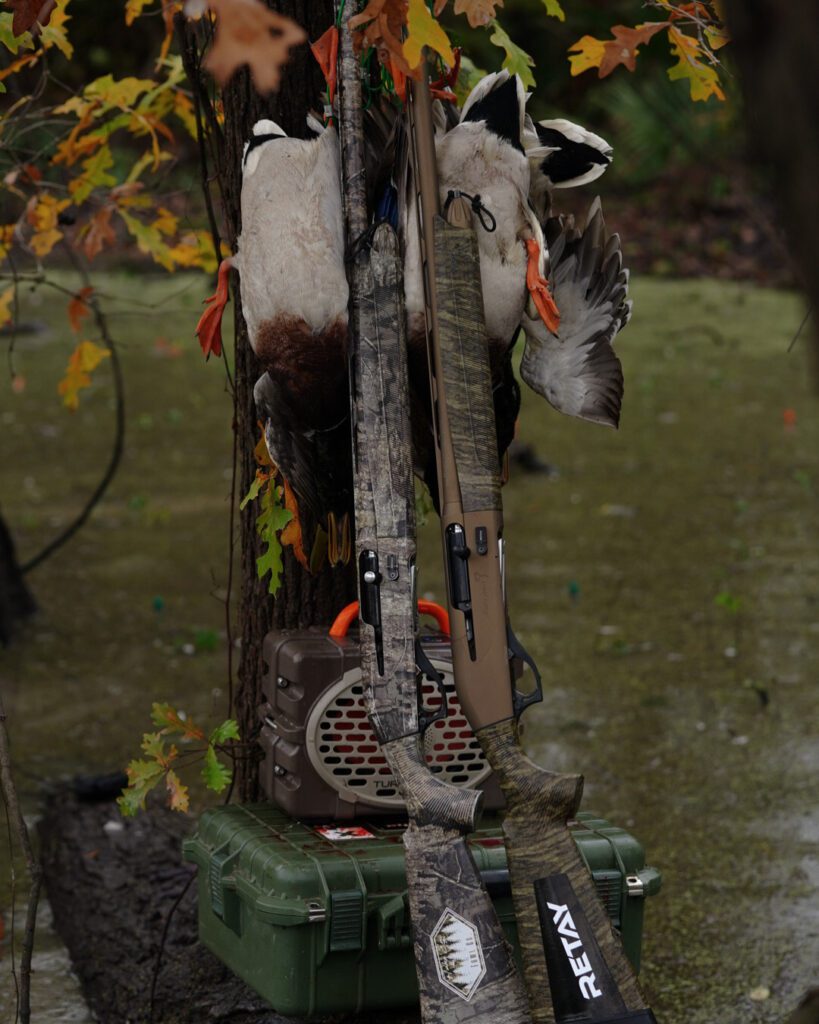
In the famous words of Austin Powers “Who does number two work for?” The simple answer is everyone. This shotshell combination isn’t the end all be all. It’s not the best for all situations but there are few other options for a shot size that can realistically take on most waterfowl situations. If you’re going out with a guide or experienced friend and they tell you to grab something else for a specific situation, take note, grab a box and pattern it and then run it if it makes sense. But I would advise grabbing a few different boxes of 3” #2’s and patterning them all. See which shoots the best and then buy as many as you think you’ll need for the season and then add some. None of us are as good a shot as we believe ourselves to be and no matter what situation you end up in during the waterfowl season you can’t go wrong with the best shooting 3” #2 you can find. This stuff just works.
